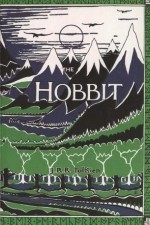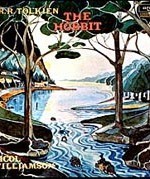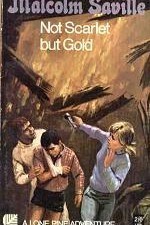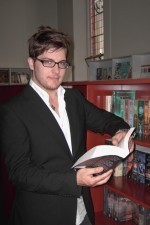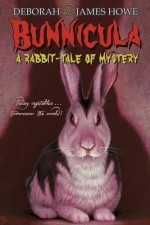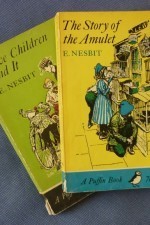Michael Pryor's Blog, page 23
March 15, 2012
What's 10 Futures About?
The best way to prepare for the future is to imagine it. In our imaginations we can anticipate where we're going, where our lives might be, the shape of the world to come.
10 Futures is a very different book for me, a real departure from the wonderful Steampunk worlds of 'The Laws of Magic' and 'The Extraordinaires'. I needed to abandon the gloriously formal and extended language of the Edwardian era and use language that is more clipped and direct. And 10 Futures doesn't have much humour, which was a real wrench for me, but different contexts and different milieus require different approaches to writing.
10 Futures isn't just random speculating. Each story segment has been carefully researched, and this is one area that was consistent with my last ten years of writing. The only difference was that instead of researching history, I was researching current trends and then trying to find good, evidence-based extrapolation. I looked at societal and cultural trends as well as scientific developments and asked the classic question: 'What happens if this goes on?'
As well as this exploration of trends and wondering about the direction of humanity over the next hundred years, I was also considering the nature of ethical issues and moral dilemmas. Do morals change over time, or are some situations eternal? What affects our judgement of right and wrong? How could this change in response to a changing world? Should it change in response to a changing world?
Stories can make us think, and they can make us feel. They can put us in other shoes and wonder what we would do, how we would react, how we would cope.
When we immerse in stories, our empathy grows.
Teacher's Notes for 10 Futures are available at the Random House teacher website. Click on the 'Secondary' button and then on '10 Futures'.
March 14, 2012
Comments
Just to let everyone know that I've implemented a feature to screen out all the robot spam I've been getting. If you'd like to comment, you have to solve a tiny arithmetic problem which will convince me that you're a real person. Robots can do stuff like that!
Thanks for your patience.
Writers Write: My Favourite Book 18
When I think about books and my childhood, I see the cane bedside table on which all wonderful things were held: a portable radio, then later, a walkman, a jar of jelly crystals (for eating) and books. I was obsessed with memorising text from an early age and used to go to bed with Banjo Patterson's 'The Man from Snowy River'. I also remember trying to read the bible from cover to cover (it was a Good News Bible – I can see it now, the perky yellow text on the faded brown cover.) I also loved dogs. Daschounds and Basenjis in particular, and I had a picture book about dogs that I kept open on a certain page as if I could dream the dog into existence and have him sleeping at the foot of my bed by morning. I remember Joan Aiken's The Wolves of Willoughby Chase, and Roadl Dahl's Danny the Champion of the World.
But the book that I remember most is The Hobbit. We borrowed the audiocassettes from the Ringwood library and I'm not sure that we ever returned them. I can still hear Nicoll Williamson's sonorous voice. Maybe it was because, like Bilbo Baggins, I had hairy toes. Or maybe it was because I liked underground houses, or maybe it was just the idea of Gandalf scratching a mark on a door and changing a person forever but the Hobbit remains for me the defining book of my childhood. I loved to pore over the maps and illustrations and imagine myself in Tolkien's world. I dreamed about Rivendell. And for a while everything was kingdoms and adventure and it didn't matter if you were a boy or a girl … I don't know what happened to me though, because after the Hobbit, I just started reading Judy Blume and then Sweet Valley High books and then quite terrible airport novels by authors with outlandish names like June Flaum Singer.
Simmone's latest book is Everything Beautiful (Pan Macmillan 2008). For more, try Simmone's website or Tumblr. She also Twitters at @postteen.
March 9, 2012
10 Futures Book Trailer
And here's the book trailer for '10 Futures', which will be released next month.
February 29, 2012
Writers Write: My Favourite Book 17
Like many people, a book that I remember clearly was one of the Narnia series by C.S. Lewis – The Magician's Nephew. It was the first book I ever owned, as it was a present from my older sister. It was a while later before I discovered there was more than one book in the series, and could borrow them from the public library.
But there were others that have stayed with me – in particular, Swallows and Amazons by Arthur Ransome. Again, I borrowed these from the library in town, as we had little money to spend on books back then. I think the books I loved most were adventure stories of some kind – even Enid Blyton's Famous Five and Secret Seven were on my list of favourites.
But it's not actually a book that had perhaps the greatest influence on me – it was a writer, Malcolm Saville. The one title I remember reading was Not Scarlet But Gold (one in an adventure series again), and Saville was the only author I was ever brave enough to write to. A couple of months later, a letter arrived for me, all the way from England. He'd written back! I wish I still had the letter but I've never forgotten how he took the time to send me something personal, not photocopied or printed from a file for the hundredth time.
Sherryl's most recent book is 'Dying to Tell Me' – published in the USA by KaneMiller, September 2011. For more, visit Sherryl's website and blog.
February 27, 2012
The 'Somehow' Problem
I have a list of what I call 'Traitor Words'. Toward the end of my rewriting/revising/reworking process, I always sit down and do a Search for each of them. If I find one, I destroy it and replace it with a better word – because Traitor Words weaken writing.
Taken by themselves, out of context, each of the Traitor Words is a perfectly respectable, harmless part of our language. I've learned, however, that for each of them, I could do better.
I'm not going to share my list – it's a top secret litany of shame – but I will highlight one word, as an example, and that's the word 'somehow'.
I shudder when I see it upon re-reading. It slides in so easily while I'm writing my first draft that it's hard to see it then. It's seductive and has an aura of usefulness that can be handy when one is searching for a particular word. It presents itself so readily as the answer to so many problems that it can appear invaluable.
And that's the problem. I've come to understand that when I use 'somehow', I'm usually being lazy. Or perhaps I'm battling fatigue and it's time to quit for the night.
When I find myself writing things like: 'He was trapped, with no hope of escape, and then somehow he found his way to the control room and stopped the countdown' or 'She never could work with her mother, not since the time with the apples, but somehow this Christmas was different' or 'I somehow got from A to B and then went on with the story' then I know I'm indulging in weak, flabby writing. I'm cheating.
It's painful, but I've disciplined myself to ask myself what I meant when I slotted 'somehow' into that first draft. What actions, thoughts, events and emotions were packed into that word? What was I avoiding? Was I simply being too lazy to think of the best way out of that particular situation?
Try substituting 'through application of pixie dust' for 'somehow', and you'll see what I mean: 'He was trapped, with no hope of escape, and then through application of pixie dust he found his way to the control room and stopped the countdown'. It works just as well, and it highlights the issue.
Of couse, since this is writing we're talking about, generalisations are dangerous. Sometimes, it can have a place. In dialogue, for instance, it can be important to indicate an ambivalent state of mind, or evasion or similar. Otherwise, be extremely careful of using it.
'Somehow' is a Traitor Word. Beware of Traitor Words. Eliminate them, and your writing will be better for it.
February 22, 2012
Writers Write: My Favourite Book 16
I grew up in a smallish town in the northeast of the USA that exists, more or less, in a forest. It's the sort of place riddled with big red barns and three-hundred-year-old farmhouses. It had, and I've no reason to believe this has changed, an ancient, still-working apple cider mill and a field where everyone gathered for fairs, the sort where the fruit is dressed up in caramel. New England. Connecticut. Think Salem, and you're on the right track. I lived partly in this place, but I mostly inhabited what my imagination made of it, a semi-formed dreamscape where the real and the not-so-real were indistinguishable to me. Overactive imagination, my mother called it, but I simply believed. Monsters. Ghosts. Every story my older brother told me. The hook-handed madman escapee. The demonic clown. The girl in the mirror. All of it real.
Drip. Drip. Drip.
What has any of this have to do with books? Well, I believe that books carry more weight than the some of their pages, and our connection to them functions on a fundamentally deep level. Books will mean different things to us at different times, and I wanted you to know where my head was at when I first met a small white vampire bunny rabbit named Bunnicula. The Bunnicula books, by James Howe, are about a vampire bunny that sucks the juice out of vegetables, a cat named Chester who is convinced Bunnicula must be steaked, a dopey dachshund called Howie, and Harold, the dog who narrates the tale. I enjoyed these books immensely, curled up in the library at lunchtimes absorbed in their pages while outside the nearness of Halloween darkened the world. The forests grew closer. The ghouls came out to play. I honestly don't remember much about the books themselves, but I what I adore about them is the sense they evoke in my memory, of being safe inside in the warmth while the cold of winter crept up and the sun seemed to abandon us to the dark.
These books also taught me that the spooks that lurked within my mind weren't just horrors the world – and my older brother – set against me, but things that I could control. A vampire? Horrific. A vegie-sucking bunny? Not so much. In fact, it's pretty hilarious. My 'overactive imagination', the one that had once peopled every dark room with murderers and lions (yes, I used to be afraid a lion would eat me in the night), was now my own domain, and I chose what went on there, for good or ill. Are the Bunnicula books solely responsible for this awakening of my imaginative powers? Probably not, but they were there when it happened, holding my hand, getting me through, and I'll always remember them fondly for that.
Ben's latest book is 'Beast Child', Volume Two of the Voyages of the Flying Dragon from Random House Australia, September 2011
For more, see Ben's website: benchandler.com.au
February 20, 2012
Steamscape
Steamscape is  a steampunk exhibition, part of the cultural program of the L'Oreal Melbourne Fashion Festival. It's running from 3 March to 25 March, with a free special launch evening on 2 March. I'm part of the program, delivering an Illustrated History of Steampunk. All welcome!
a steampunk exhibition, part of the cultural program of the L'Oreal Melbourne Fashion Festival. It's running from 3 March to 25 March, with a free special launch evening on 2 March. I'm part of the program, delivering an Illustrated History of Steampunk. All welcome!
February 15, 2012
Writers Write: My Favourite Book 15
My book is Five Children and It by E. Nesbit, published in 1902. It's a novel of 'careful what you wish for' episodes featuring a family of children – Anthea, Jane, Robert and Cyril and their baby brother, the Lamb (Hilary) – who find a Psammead, an ancient, wish-granting Sand-fairy. There are two further titles with the same characters, The Story of the Amulet, and The Phoenix and the Carpet.
I read and re-read Edith Nesbit's books in around grade six, at the same time I was also reading Enid Blyton , L.M. Montgomery, Susan Coolidge, C.S. Lewis and Louisa May Alcott – all of whom very obligingly wrote series.
The Puffin paperback had beautiful illustrations from the original edition, by H.R. Millar. Not that I knew it at the time, but Edith Nesbit was a prominent socialist, a founding member of the Fabian Society. Her political views provide a welcome contrast to those of Enid Blyton (writing decades later) when it comes to characters' attitudes to, for example, gypsies or servants, or gender, for that matter.
I loved Edith Nesbit's characters, their wonderfully good intentions and fallibility, and the impossible scrapes into which they very reliably got themselves. The characters and their worlds are real to the last detail of dirty handkerchiefs and darned stockings and sibling snipes, and it is into this lovely grimy reality that she places her stories of magic and adventure.
One of the things I can remember being charmed by was that these children so clearly from another era, with their Edwardian pinafores and petticoats, and belted Norfolk jackets, were nonetheless just like me in many respects. They got bored, they lost their tempers, fought with their brothers and sisters, they sulked, food was very important to them, they wished to behave well, but often didn't, and then tried to make amends, not always successfully.
The adventures in Five Children and It are so logically constructed – there's a satisfying inevitability to the consequences of the wishes, and yet a complete belief that you the reader would have been equally susceptible to the problems encountered by the children, had you been lucky enough to find a Psammead. Edith Nesbit knows how to apply the narrative clamp and not let her characters off the hook until they've learnt something. It helps that the Psammead is such a prickly malcontent, who could not be less interested in providing happy outcomes.
Her inventiveness, warmth, humour and humanity make Edith Nesbit's books as fresh and readable to me now as they were when I was eleven.
'Six Impossible Things' is Fiona's first book. It was published by Pan Macmillan in 2010, and shortlisted in the 2011 CBCA Awards. For more, visit Fiona's website: www.fionawood.com
February 14, 2012
Supanova!
Some big news! I'll be appearing as a guest at Supanova Pop Culture Expo Melbourne and Gold Coast, in April.


